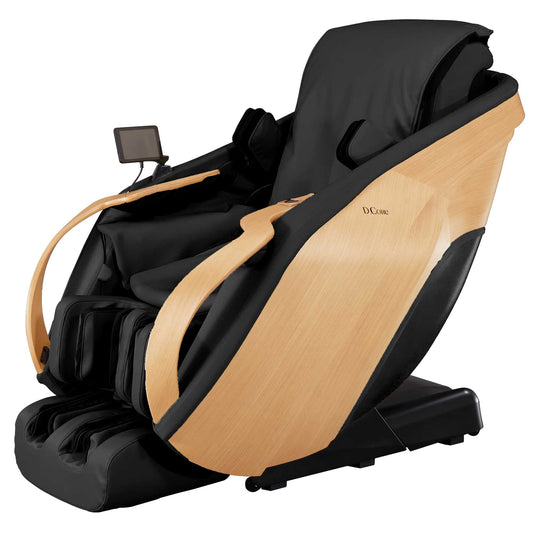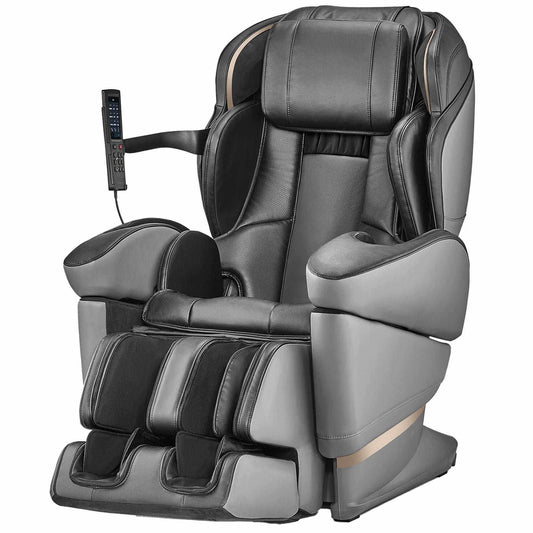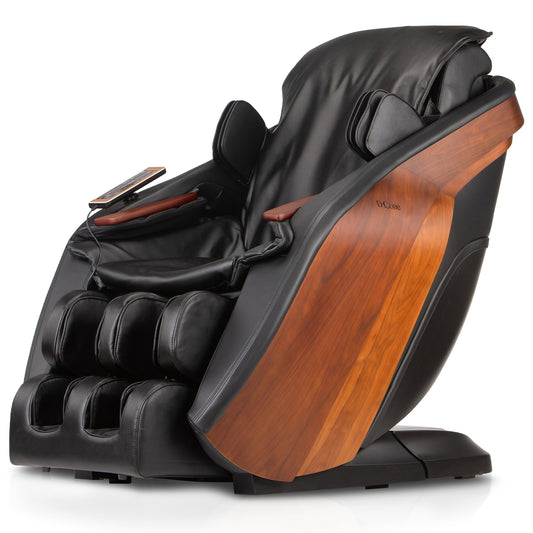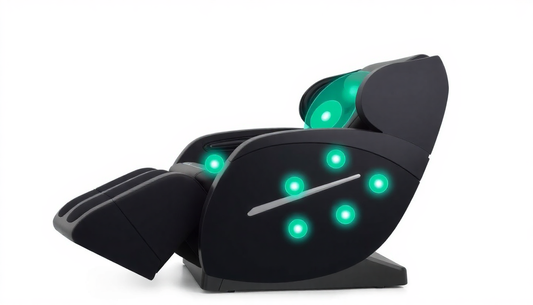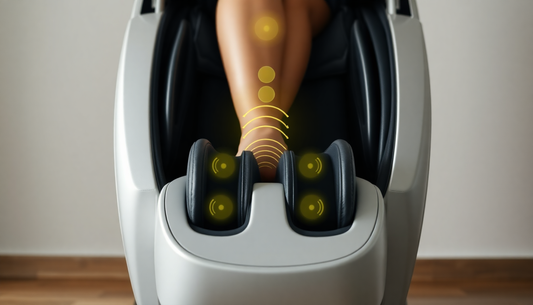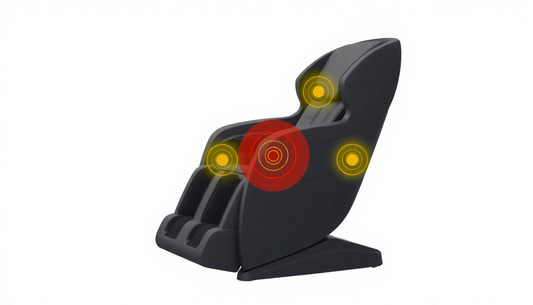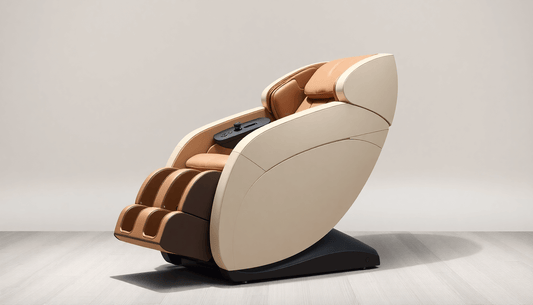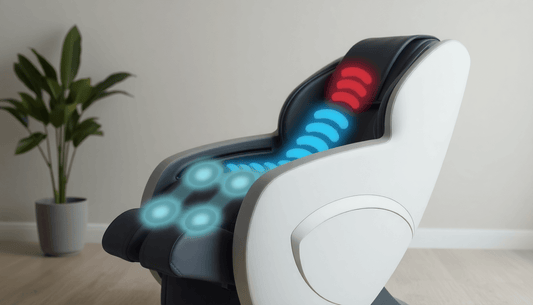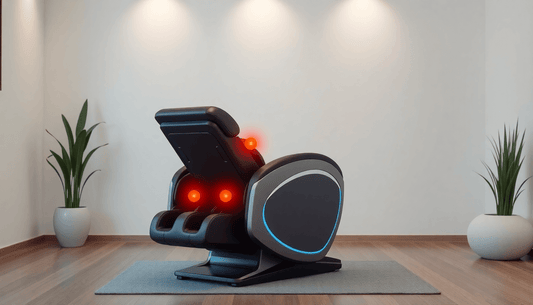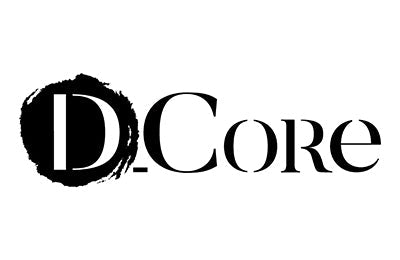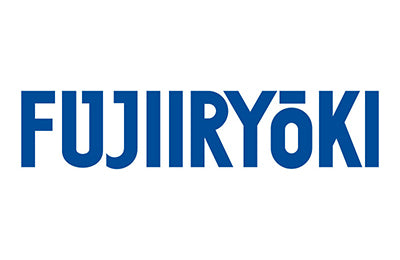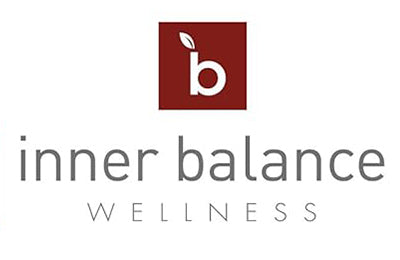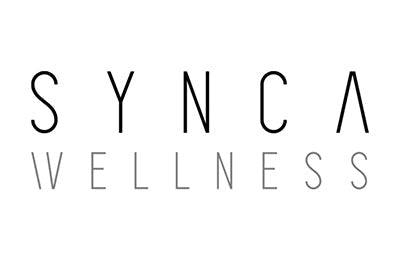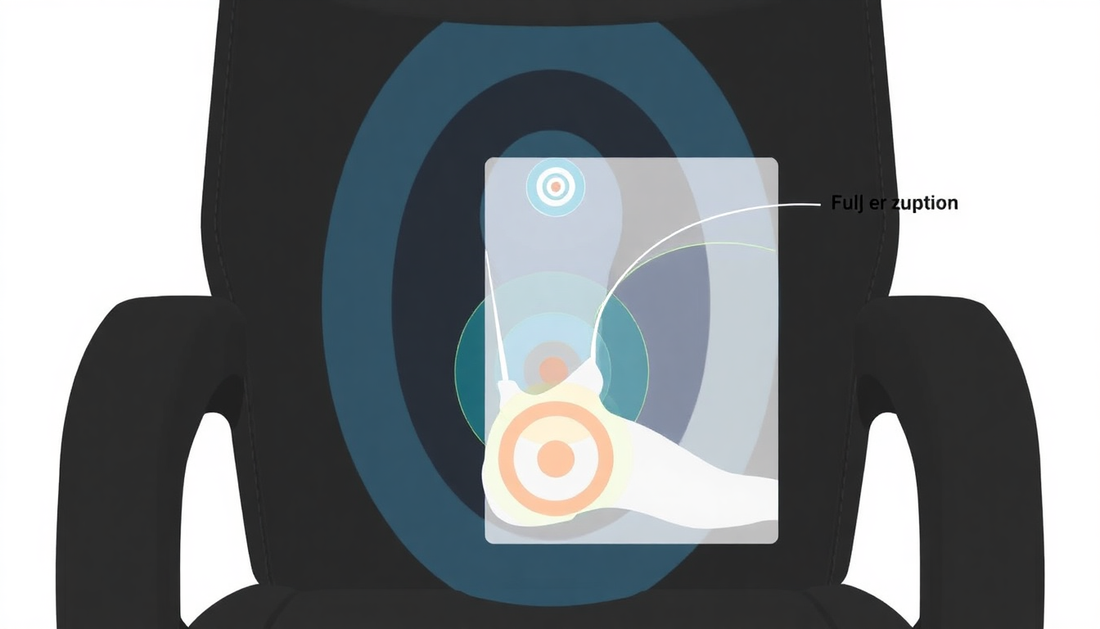
Day 1 — Calm Plus: A Presentation-Style Guide to Fujiiryoki Massage Techniques, Target Zones (Ankle to Head) and Therapeutic Benefits
Introduction
Welcome to Day 1 of the Fujiiryoki model series. This in-depth, presentation-style guide is dedicated to the Calm Plus massage chair. It maps massage techniques to target zones from ankle to head, explains how the machine replicates manual methods, and summarizes therapeutic benefits. Whether you are researching for home recovery, workplace wellness, or supportive therapy, this long-form guide arms you with practical usage plans, safety guidance, and SEO-friendly keywords to find the most relevant Calm Plus resources.
Table of Contents
- Quick model overview and standout features
- How Calm Plus reproduces manual massage techniques
- Detailed target zone coverage from ankle to head
- Technique deep dives and recommended settings
- 4-week usage plan and session templates
- Safety, contraindications, and medical notes
- Maintenance, setup, and purchasing tips
- FAQ and concluding recommendations
Quick Calm Plus Overview
- Model: Fujiiryoki Calm Plus
- Design intent: therapeutic home massage with multi-zone coverage and adjustable intensity
- Core systems: multi-axis roller track, foot rollers, extensive airbag zones, targeted heating elements, preset programs, and manual/custom modes
- Primary techniques supported: Swedish, Deep Tissue, Trigger Point, Acupressure, Shiatsu, Reflexology, Kneading
- Primary targeted body parts: ankle, heel, feet, calf, knee, thigh, legs, back, spine, neck, shoulder, head, hands, wrist, and whole body
How Calm Plus Reproduces Manual Massage Techniques
The Calm Plus combines mechanical rollers, airbags, heat, and motion to emulate hands-on techniques. Understanding these mechanisms helps you choose programs that match therapeutic goals.
- Roller track and nodes: Long rollers travel along a defined track from lower back through upper back and neck, offering kneading, rolling, and shiatsu-style pressure.
- Foot rollers and textured pads: Target reflex points on the sole, heel, and toes for reflexology and kneading sensations.
- Airbag compression: Strategically placed airbags compress and release around calves, ankles, thighs, hands, wrists, shoulders and hips for acupressure and circulatory assistance.
- Heat therapy: Localized heating elements for lumbar and possibly foot areas increase tissue temperature, improving elasticity and blood flow prior to deeper work.
- Custom sequencing: Preset programs combine these elements in timed sequences to simulate session flow similar to a therapist.
Anatomy and Physiology in Brief: Why Techniques Work
- Circulation: Rolling and kneading increase blood flow, supporting oxygen and nutrient delivery and aiding metabolic waste removal.
- Muscle fibers: Kneading and deep tissue compress and stretch muscle fibers, improving flexibility and reducing adhesions.
- Neuromodulation: Rhythmic pressure and gentle traction reduce sympathetic arousal and activate parasympathetic responses for relaxation.
- Lymphatic flow: Compression sequences encourage lymphatic drainage, reducing edema in ankles, feet, and calves.
- Trigger points: Sustained nodal pressure can reduce hypersensitive loci within taut bands, decreasing referred pain.
Target Zone Breakdown: Ankle to Head
Each section below lists Calm Plus techniques commonly used for that zone, expected benefits, recommended intensity and session duration, and practical tips for maximizing results.
Lower Limb: Ankle and Heel
- Techniques used by Calm Plus: airbag compression, gentle oscillatory compression, mild kneading.
- Primary benefits: improved microcirculation, reduced mild swelling, improved ankle mobility and decreased morning stiffness.
- Recommended settings: low to medium intensity; 10 to 15 minutes focused per session.
- Tips: elevate knees slightly in the chair to reduce tension across the Achilles. Avoid strong deep tissue directly over acute injuries or inflamed joints.
Feet and Heel: Reflexology Focus
- Techniques: foot rollers, textured sole stimulation, targeted acupressure.
- Primary benefits: reflex point stimulation, reduced plantar fatigue, improved sleep prep when used before bed, enhanced circulation.
- Recommended settings: medium intensity for 10 to 20 minutes; alternate harder/softer rolling patterns for variety.
- Tips: if you have plantar fasciitis or heel spur pain, start with very low intensity and short durations, and consult a clinician if pain increases.
Calf
- Techniques: airbags that compress and release, kneading rollers when the leg track is engaged.
- Benefits: reduced post-exercise fatigue, improved venous return, decreased cramping tendency.
- Recommended settings: medium intensity, 10 to 15 minutes after exercise; use heat prior to deep compression.
- Tips: ensure correct leg length setup so airbags align with the widest calf point for even compression.
Knee
- Techniques: surrounding air compression, gentle oscillatory motion, passive range-supportive movements.
- Benefits: reduced stiffness, improved functional mobility in osteoarthritic or postural stiffness contexts (non-acute)
- Recommended settings: low intensity, brief sessions of 5 to 10 minutes directly targeting the knee; avoid aggressive deep tissue if joint inflammation is present.
- Tips: knees with recent surgery, severe instability, or deep vein thrombosis are contraindicated without medical clearance.
Thighs and Whole Legs
- Techniques: kneading rollers, airbags encircling thighs, deep-tissue roller options.
- Benefits: supports recovery for hamstrings and quadriceps, reduces DOMS (delayed onset muscle soreness), improves flexibility and range of motion.
- Recommended settings: medium to high intensity depending on tolerance, 10 to 20 minutes after strenuous exercise; warm tissue first for deep settings.
- Tips: combine calf and thigh programs to improve whole lower limb venous return and muscle recovery.
Back and Lumbar Region
- Techniques: shiatsu nodes, longitudinal kneading, focused deep tissue nodes, heat therapy across lumbar area.
- Benefits: relief of lumbar tension, improved posture comfort, decreased chronic low back pain in many users when used consistently.
- Recommended settings: start low and progress to medium for deep tissue; 15 to 30 minutes depending on the program. Use heat first for deeper pressure tolerance.
- Tips: if you have a herniated disc or severe sciatica, consult a healthcare professional before high-intensity use. Use gentle programs for decompression-like comfort.
Spine Alignment Support
- How Calm Plus helps: the long roller track follows the curvature of the spine providing even pressure distribution and gentle traction-like effects when reclined with leg elevation.
- Benefits: improved spinal mobility sensation, reduced postural muscle guarding, and enhanced comfort when used regularly.
Neck and Cervical Region
- Techniques: precise rollers and nodes, gentle traction motion, heat if available in the cervical region.
- Benefits: reduced tech-related neck tension, improved cervical range of motion, decreased frequency of tension-type headaches for some users.
- Recommended settings: low to medium intensity with short 10 to 15 minute sessions for adaptation.
- Tips: avoid high intensity over the cervical vertebrae in people with unstable cervical conditions.
Shoulders
- Techniques: airbags around shoulder girdle, trigger-point style pressure using nodal rollers, kneading.
- Benefits: decreased trapezius tightness, improved scapular mobility, reduced upper back tension from posture.
- Recommended settings: medium intensity for 10 to 20 minutes; use targeted shoulder sequence for desk workers.
Head and Cranial Comfort
- Techniques: light acupressure near the base of skull, vibration or gentle pressure sequences, calming whole-body programs integrating neck and shoulders.
- Benefits: relaxation, reduction in general stress, possible reduction of tension-headache triggers for non-pathological headache types.
- Recommended settings: low intensity, short durations of 5 to 15 minutes integrated into full sessions.
Hands and Wrist
- Techniques: compressive airbags, light kneading, rhythmic release.
- Benefits: reduced hand fatigue, improved local circulation, symptomatic relief for repetitive strain tension when combined with ergonomic changes.
- Recommended settings: low to medium intensity, short sessions of 5 to 10 minutes as a restorative break for desk-bound tasks.
Whole-Body Integration
- Techniques: integrated programs combining sequential limb compression, full spine rollers, targeted neck and shoulder kneading, foot reflexology and heat.
- Benefits: global stress reduction, systemic circulation improvement, combined muscle therapy for recovery cycles and relaxation.
Technique Deep Dives: What Each Feels Like in Calm Plus and When to Use
- Swedish Massage
- How the chair replicates it: long gliding roller motions and rhythmic compression from airbags.
- When to use: daily relaxation, circulation boosts, sleep preparation.
- Benefits: stress relief, improved blood flow, mild muscle relaxation.
- Deep Tissue Massage
- How: concentrated roller pressure, slower repeated motions and sustained node pressure.
- When to use: chronic muscle tightness and recovery contexts (not on acute inflammation).
- Benefits: deeper muscle therapy, improved tissue pliability, reduced chronic tension.
- Trigger Point Therapy
- How: focused nodal pressure from rollers and intermittent sustained nodes.
- When to use: localized knots, persistent focal pain.
- Benefits: reduced referred pain and localized tension release.
- Acupressure and Shiatsu
- How: rhythmic airbags and pinpoint node pressure mimicking palm and thumb pressure along meridians.
- When to use: energy balancing, combined relaxation protocols, targeted pain relief.
- Benefits: localized pain relief, deep relaxation, meridian point stimulation.
- Reflexology
- How: textured rollers and nodal stimulation under the sole and heel.
- When to use: foot fatigue, circulation work, pre-sleep routines.
- Benefits: systemic relaxation through reflex points, foot pain relief.
- Kneading
- How: bilateral rotational roller motion that cradles and compresses muscle tissue.
- When to use: muscle stiffness, pre-activity warming or post-activity recovery.
- Benefits: improved flexibility, decreased tightness, enhanced tissue pliability.
4-Week Progressive Usage Plan
Below is an adaptable plan to maximize adaptation, safety and benefit from Calm Plus. Adjust based on tolerance, goals and medical guidance.
- Week 1: Adaptation
- Goal: introduce nervous system to mechanical stimulation and establish baseline tolerance.
- Sessions: 3 to 5 short sessions per week, 10 to 20 minutes per session at low intensity.
- Focus: Swedish and light shiatsu across back, neck, and feet.
- Week 2: Build Comfort
- Goal: increase session length and incorporate more targeted work.
- Sessions: 4 to 6 sessions per week, 20 to 30 minutes; introduce medium intensity kneading and trigger point sequences.
- Focus: calves and thighs post-exercise, neck and shoulders for desk recovery.
- Week 3: Targeted Therapy
- Goal: use targeted deep tissue and trigger point work where needed.
- Sessions: 4 to 6 sessions per week, 25 to 35 minutes; alternate deep sessions with light recovery sessions.
- Focus: deep tissue on chronic tight areas while maintaining circulation sessions on other days.
- Week 4: Maintenance & Optimization
- Goal: refine a personalized program for ongoing maintenance and symptom control.
- Sessions: 3 to 6 sessions per week depending on activity levels, mixing 15 to 40 minute sessions.
- Focus: long-term balance between relaxation, recovery, and targeted therapy.
Session Templates and Presentation-Style Scripts
- Daily Comfort Reset 20 minutes
- Program: Swedish full-body rolling, foot reflexology, low-intensity neck kneading
- Outcome: morning circulation kick or evening wind-down
- Post-Run Recovery 25 minutes
- Program: calf and thigh kneading, moderate foot rollers, gentle lumbar knead with heat
- Outcome: reduced DOMS and improved venous return
- Desk-Worker Revive 30 minutes
- Program: shoulder trigger point focus, cervical rollers, wrist/hand airbags
- Outcome: improved posture comfort and reduced upper cross syndrome tension
- Full-Body Recovery Night Routine 35 to 45 minutes
- Program: full-body sequential compression, long spine rollers, light head/neck acupressure, foot reflexology
- Outcome: deep relaxation and sleep preparation
Safety, Contraindications, and When to See a Professional
- Consult your healthcare provider before use if you have: cardiovascular disease, pacemakers, deep vein thrombosis, severe osteoporosis, uncontrolled hypertension, recent surgery or fractures, or if you are pregnant.
- Avoid intense deep tissue programs on acute injuries, inflamed joints, open wounds, or infections.
- Stop use immediately if you experience sharp or increasing pain, dizziness, numbness, or unusual symptoms.
- For chronic medical conditions, use Calm Plus as an adjunct to, not a substitute for, clinician-directed therapy.
Maintenance, Setup, and Practical Considerations
- Positioning: ensure proper recline and leg extension for the roller track alignment; most models have adjustable leg rests for anatomical fit.
- Power and space: allow clearance behind and to the sides of the chair as recommended in the manual for full recline and motion. Use a grounded outlet and avoid extension cords when possible.
- Cleaning: wipe exterior upholstery and foot wells with a soft, damp cloth and mild soap; avoid harsh chemicals on electronics and roller areas.
- Periodic checks: inspect air hoses, power cords, and moving parts for wear. Follow manufacturer recommendations for service intervals and authorized repairs.
- Warranty and registration: register your Calm Plus and retain receipts and manuals to ensure warranty coverage and customer support access.
Buying Considerations and SEO Keywords
- Keywords to use when researching: Fujiiryoki Calm Plus massage chair features, Calm Plus foot reflexology benefits, Calm Plus deep tissue settings, Fujiiryoki Calm Plus review, Calm Plus vs Cyber Relax Ai comparison.
- Feature checklist: roller track length, foot roller type, number and distribution of airbags, heating elements, programmable custom modes, recommended session timers, warranty terms, and maintenance support.
- Compare ergonomics: test chair fit for your height and leg length where possible. A properly fitting chair yields better results and reduces misalignment during sessions.
Integrating Calm Plus into a Therapy Plan
- Complementary use: pair Calm Plus sessions with active stretching, foam rolling, or clinician-guided exercises to combine passive and active therapies for best tissue adaptation.
- Documentation: log session types, intensities, and symptom response to share with clinicians when discussing pain management or recovery strategies.
- Recovery programming: use Calm Plus as part of periodized recovery blocks for athletes or physically active individuals to manage load and enhance readiness.
Troubleshooting Common Issues
- Chair seems too intense: reduce intensity and session length, use heat first, and progress gradually.
- Airbags not inflating evenly: check for obstructions in the leg and arm wells and confirm proper fit; power cycle the chair and consult the manual.
- Foot rollers feel misaligned: adjust leg rest length and ensure feet are placed correctly; refer to user manual for alignment tips.
- Chair is noisy: slight operational sound is normal; unusual grinding or persistent loud noise should prompt service inspection.
FAQ
- Is Calm Plus suitable for daily use?
- Yes for most healthy adults. Start gradually and follow the recommended session lengths. Consult a clinician if you have medical concerns.
- Can Calm Plus help with chronic back pain?
- Many users report reduced muscle tension and improved comfort. Use as part of a comprehensive plan with professional guidance when pain is chronic or severe.
- How long until I feel benefits?
- Some users feel immediate relaxation and reduced tension after one session. More durable changes in flexibility and chronic pain often require weeks of consistent use aligned with progressive programming.
- Should I use heat every session?
- Heat is beneficial before deep work to warm tissues, but avoid excessive or prolonged heat if you have sensitivities or impaired heat sensation.
Ethical and Medical Disclaimer
This guide aims to explain how Fujiiryoki Calm Plus maps mechanical functions to manual massage techniques and the potential therapeutic benefits users commonly seek. It is educational content and not medical advice. For diagnosis, treatment, or guidance related to medical conditions, consult a licensed healthcare provider.
Conclusion and Next Steps
The Fujiiryoki Calm Plus is a versatile therapeutic chair that reproduces key massage techniques and targets a wide range of anatomical regions from ankle to head. With proper setup, gradual progression, and attention to safety, Calm Plus can be a powerful adjunct for circulation enhancement, muscle therapy, stress relief, and recovery programming. Use the 4-week plan and session templates in this guide to build a personalized routine tailored to your goals.
What to Expect on Day 2
Tomorrow we will dive into the Cyber Relax Ai model and compare its technology, program design, and unique features to Calm Plus, so you can make an informed choice across models in this series.
